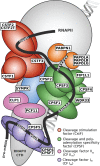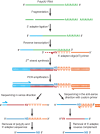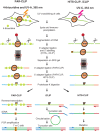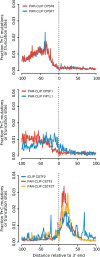Means to an end: mechanisms of alternative polyadenylation of messenger RNA precursors
- PMID: 24243805
- PMCID: PMC4282565
- DOI: 10.1002/wrna.1206
Means to an end: mechanisms of alternative polyadenylation of messenger RNA precursors
Abstract
Expression of mature messenger RNAs (mRNAs) requires appropriate transcription initiation and termination, as well as pre-mRNA processing by capping, splicing, cleavage, and polyadenylation. A core 3'-end processing complex carries out the cleavage and polyadenylation reactions, but many proteins have been implicated in the selection of polyadenylation sites among the multiple alternatives that eukaryotic genes typically have. In recent years, high-throughput approaches to map both the 3'-end processing sites as well as the binding sites of proteins that are involved in the selection of cleavage sites and in the processing reactions have been developed. Here, we review these approaches as well as the insights into the mechanisms of polyadenylation that emerged from genome-wide studies of polyadenylation across a range of cell types and states.
© 2013 The Authors. WIREs RNA published by John Wiley & Sons, Ltd.
Figures








References
Publication types
MeSH terms
Substances
LinkOut - more resources
Full Text Sources
Other Literature Sources

